Nigel will be discussing Leatherhead's Anglo-Saxon Minster, prompted by the statement in the Society's The History of Leatherhead "somewhere in the Pachenesham area an Anglo-Saxon church may still await the archaeologist". His talk will cover the historical background of Anglo-Saxon Surrey, Anglo-Saxon Minsters - what they were and how to identify them, Surrey's Minsters, why we believe there was a minster in Leatherhead and where we might hope to find it. On retiring from Exxon Mobil Nigel studied archaeology at University College London. He is an active member of Surrey Archaeological Society and after many years in Leatherhead now lives in Ashtead.
Friday 19th February: FOUR LOCAL PERSONALITIES, FROM DOMESDAY TO MODERN TIMES - presented by four members of the Society.
Perhaps after this talk you might propose other personalities connected with our area that we might find interesting.
Our February 2016 Newsletter was available for collection at the February talk for those members who choose to receive the printed version and at the same time it was sent electronically to the rest of you.
Friday 26th February: Mickleham & Westhumble Local History Group, 7.45pm for 8pm, Mickleham Village Hall, Dell Close, Mickleham RH5 6EE
A presentation by Andrew Tatham: See your History in their History
Andrew Tatham found the families of all 46 men in a First World War group photograph. His research led to artwork and a book, and after appearing on BBC Radio 2, sales of the book went through the roof as a result of Jeremy Vine's praise. As well as talking about the history and detective work involved in his research, Andrew will be showing his animated film that depicts all the men’s family trees growing like trees over 136 years, along with music and historical images for each year as well as the passing of the seasons.
£3 for non-members of MWLHG - pay on the door, but booking essential.
Contact Judith Long: 01372 375206 / judith.long2@btinternet.com
Saturday 27th February, 10.00-15.00: Surrey Archaeological Society Annual Symposium
This annual spring meeting will present a round-up of recent work in Surrey and by SAS. It is at the Ashtead Peace Memorial Hall, Woodfield Lane, Ashtead. The Leatherhead & District Local History Society will will be among those having a display stand.
This symposium will end at 3.30pm and will be followed by a session free to all members of the Society to discuss the future plans for the Society. The full programme is available to view with a booking form (£10 if booked in advance, £12 on the door).
Friday 18th March: ANNUAL GENERAL MEETING
This will be followed by a talk by our Proceedings Secretary, Bill Whitman, on his hopes for the Proceedings.
Friday 15 April 2016 THE ARCHAEOLOGY OF BOOKHAM - by Lyn Spencer.
This talk will focus on recent investigations in Great Bookham including the test-pitting programme and the excavations that are looking for evidence of the manor complex of Bookham Courte, part of which may lie beneath Lyn's garden!
Friday 20th May PROTECTING OUR BUILT LOCAL HERITAGE - by Peter Mills
Peter Mills is the Historic Environment Officer at Mole Valley District Council.
St John's School and FM Lord Montgomery - please see our What's New? page about two events at St John's School in May.
L&DLHS Coffee Morning Saturday 25th June 2016 10am-noon in the Kirby (LCA) Library, Letherhead Institute, 67 High Street, Leatherhead, Surrey. KT22 8AH
Last year we held a very successful and enjoyable coffee morning, and would like to invite you to attend this year's event.
FREE ENTRY: members and non-members are welcome. Coffee/tea and biscuits available for a small contribution!
If anyone would like to contribute resources, including maps, photographs, projects, books etc, please get in touch with Anne Fraser. (anne.o.fraserATntlworld.com - change AT to @ before sending)
All contributions gratefully received.
LOOK FORWARD TO SEEING YOU THERE. (please note revised date)
Friday 16th September - David Graham, a former president of the Surrey Archaeological Society, describes Farnham and its unique castle to us.
Friday 21st October - Sally Todd's, Archivist at St John's School, Leatherhead: talk on St John's School in WW1
Friday 18th November - The 70th Anniversary of the foundation of the Society
Friday 2nd December With regret, the Christmas Quiz Event had to be cancelled.
Friday, 15th January: THE ANGLO-SAXON MINSTER AT LEATHERHEAD - by Nigel Bond
Our member Nigel Bond spoke to us in January about Anglo-Saxon minster churches. Nigel studied at the Institute of Archaeology (UCL) after his retirement. He paid tribute to the work of John Blair, who had been born and brought up locally, and was now a Professor at the University of Oxford. John's statement in the Society's History of Leatherhead that "somewhere in the Pachenesham area an Anglo-Saxon church may still await the archaeologist.” had prompted Nigel to consider where it might have stood.
The archaeological evidence for the period (the old 'Dark Ages') from the withdrawal of the Roman legions about 410AD up to the Norman conquest of 1066 extended from still-standing buildings by way of field-walking, aerial and geophysical surveys, to excavation. Our speaker showed us reconstructions of the timber built villages of West Stow and Cowdery's Down. Roman buildings and large Anglo-Saxon cemeteries have been excavated in both Ashtead and Fetcham.
The Anglo-Saxon Chronicle and Domesday Book of 1086 were the most useful of many hundreds of documents. Place name elements like -ham, -leah, -tun could show early occupation. Although there is evidence of Christian worship in Roman Britain, it was only after St. Augustine's arrival in 597AD that conversion from paganism began on a large scale, with groups of priests working from central minsters. This meant a community under a leader, with a regular lifestyle and giving pastoral care. John Blair suggested minster sites were likely to be found on hillsides, with water within a fenced enclosure, axially aligned buildings, rich material and evidence of literacy. They were likely to be on royal or episcopal manors, listed separately in Domesday Book, with a tax value, tenants and rental.
Each of Surrey's hundreds (the subdivisions of the 'south region' between broad groups of settlers) may have had a minster. Copthorne Hundred (including Leatherhead) had Kingston to the north and Wotton (including Dorking) Hundred to the south.
King Alfred left his estate at Leatherhead (Letorito, 'grey ford') to his son, and it was long regarded as an important place in county administration. It used to be thought that the present parish church was that mentioned in Domesday Book, but John Blair demonstrated that that church was originally the private 'estate church' of Thorncroft Manor, and that the reference was to a residual 40 acres of the manor of Pachenesham, to the northwest of the present town. Derek Renn had suggested, from tithe map evidence, Stoney Croft, a small patch of land off Randalls Road on the site of the later hamlet, as the site of the minster. Our speaker preferred a larger patch adjoining Rowhurst Farm and Teazle Wood further north. He demonstrated its similarity to the site of the 'old minster' of Tuesley near Godalming.
The new aerial photographic technique of LIDAR stripped away the tree cover to reveal the ground contours of several intriguing features. Fieldwalking could produce good results.
Many questions and suggestions were made at the end of Mr Bond's talk. Were there wayside crosses at the boundary of a minster's territory? Lucy Quinnell, the owner of Rowhurst (better known for the Fire & Iron Gallery) said that tree ring dating there had come up with a date of 1348, and scientists from Durham University hoped to carry out a thermoluminescence test to determine the age range of the mortar in the cellar walls, not originally below ground, whose dimensions were close to those recorded at Tuesley. Pollen and other tests on Ashtead Pond had shown it was there before the Romans: it was hoped to carry out similar work at Rowhurst.
At our next meeting on Friday, 19 February, several of our members will each speak for about ten minutes about a local personality, ranging from Domesday Book to modern times. We meet in the main hall of the Letherhead Institute (top end of the High Street) at 7.30 for coffee/tea, the talks beginning at 8pm. Visitors are always most welcome.
Derek Renn
FOUR LOCAL PERSONALITIES, FROM DOMESDAY TO MODERN TIMES - presented by four members of the Society - Frank Haslam, Derek Renn, Edwina Vardey and Brian Hennegan.
Four very different local personalities were the subjects of talks by members at our February meeting.
Edmond Tylney was Frank Haslam's subject. Although related to the great Howard family, Tylney's mother and cousin were involved in plots against Tudor royalty, and he was never knighted. He became Master of the [Court]Revels and Masques (a sort of combined impresario, wardrobe and property master), a post which he extended into censoring plays, including those of Shakespeare. Tylney lived in a house on the site of The Mansion in Church Street, where he once entertained Queen Elizabeth I.
Simon Callow (who played Tylney in the film Shakespeare in Love)was born near St Leonard's church, Streatham, which contains a memorial to Edmond Tylney and is where his father is buried. Tylney eft £100 for the repair of Leatherhead bridge, his books and a silver bowl were to be divided between the vicars of Streatham and Ashtead. An earlier Leatherhead vicar was a notorious 'frequenter of ale houses, a tipler and gusler' but why his (very godly) successor was overlooked in Tylney's will was unknown.
Going back another 500 years, Derek Renn introduced us to Gunfri∂ of Great Bookham, named in Domesday Book separately from the 36 families (plus 3 slaves) who were tenants of Chertsey Abbey. Derek argued that Gunfri∂ was a free tenant who lived in the moated site at Eastwick, then a separate settlement from Bookham, and concluded by suggesting that Gunfri∂ was a lady!
Edwina Vardey brought us back to recent times with tales of Maxwell Aitken, first Lord Beaverbrook. Born in Canada, Aitken was a self-made millionaire aged 30 when he moved to England. He quickly became an MP with the help of Bonar Law and was also a friend of David Lloyd George. He became a newspaper magnate, buying the Daily Express. His 'blacklist' included Lord Mountbatten and Noel Coward. A small gnomelike man, he was an energetic 'fixer' and held several ministerial posts under Winston Churchill during WW2. He lived at Cherkley Court for over fifty years, entertaining the great and the good (although it was reported that chorus girls disported themselves in the lily pond!) After the death of his widow, the house was sold, and Beaverbrook's name only survives locally as that of a road roundabout.
Brian Hennegan comes from a musical family, and reminisced about his teacher, Miss Mabel Fuller, who ran the Leatherhead School of Music in Devon House, Church Road for many years. She (like Dame Myra Hess) had been a pupil of Tobias Mathe, whose methods included tying hedgehogs and a poker to pupils' wrists to ensure their maintaining the right posture! Miss Fuller was a large lady, with very precise diction and a short snorting laugh, who encouraged her pupils to give concerts to improve their confidence. She conducted a number of local choral societies and was involved in the Leith Hill Festival.
Our next meeting on 18 March will be the Annual General Meeting. On Friday 15 April, Lyn Spencer will tell us about the Great Bookham testpitting programme and the excavations looking for evidence of Bookham Courte. We meet in the main hall of the Letherhead Institute (top end of the High Street) at 7.30 for coffee/tea, the talks beginning at 8pm. Visitors are always most welcome.
Derek Renn
Friday 15 April 2016 THE ARCHAEOLOGY OF BOOKHAM - by Lyn Spencer.
In her garden some years ago, Lyn Spencer dug up part of a brass ewer and pottery fragments, which experts told her were medieval, some as early as the 12Century. According to a 400 year-old detailed map owned by the National Trust, Bookham Courte, a grange of Chertsey Abbey, had stood there centuries earlier. Bookham Courte, a little to the north of the parish church, was demolished about 1720. Fired by this history on her doorstep, and using both sorts of evidence - archaeology and documents - Mrs Spencer built up a picture of the village in the past, which she described at our April meeting.
Further excavations in the garden uncovered a demolition layer of flints and roof tiles, a chalk floor, an hearth made of tiles set on edge, conglomerate pebbles similar to large blocks in the nearby church, burnt clay and a mysterious row of large chalk blocks. Small finds included clay pipes, bones with butchery marks, a whetstone and a copper repair strip. As recently as this March, building work in a neighbour's garden had uncovered a larger area of tiles on edge, but the extent and layout of the old Bookham Courte buildings have still to be worked out.
Our speaker had gone beyond her own garden, to put her discoveries in context. Most village excavations have been on deserted sites, but test pits in living villages give a better picture, with a longer time scale. She had appealed for volunteer householders, and then organised digs in gardens right across Bookham. Each pit was a metre square and up to a metre deep, dug in 20cm spits.
Some pits drew a blank, others produced worked flints and fragments of prehistoric pots. Those at Eastwick contained Roman pottery. No Saxon finds were made, but medieval pottery was found in several of the pits in the village itself.
Bookham was among many long, narrow parishes on the dip-slope of the North Downs. People need water, and their villages were sited on the spring-line, where rainwater draining through the chalk was stopped by the London Clay, producing a narrow band of fertile loam soils, now called the Lambeth Series. Sheep would have been grazed on the chalk downs, and pigs rootled in the oak and beech woods. The woods provided materials for housing and fuel. Old field names suggested that the crops grown nearer the village included wheat, barley and rye.
Members of the audience asked about the old route of The Whiteway, the whereabouts of clay pits (probably some of the ponds on the Common were used for this purpose) and how her results compared with those of other test pitting programmes.
Mrs Spencer has now published a book (Great Bookham: The Development of a Surrey Village in Maps) summarising her research and conclusions so far. It can be purchased from the Museum at 64 Church Street, which is now open on Thursday and Friday [1pm-4pm], and Saturdays [10am-4pm] with new displays.
Our next meeting will be on Friday, 20 May when Peter Mills, Mole Valley Historic Buildings Officer, will tell us how our local built heritage is protected. We meet in the main hall of the Letherhead Institute (top end of the High Street) at 7.30 for coffee/tea, the talks beginning at 8pm. Visitors are always most welcome. There will be a coffee morning on Saturday 18th June [later changed to 25th June] in the Library at the Letherhead Institute.
Derek Renn
Friday 20th May 2016 PROTECTING OUR BUILT LOCAL HERITAGE - by Peter Mills
At our May meeting, Peter Mills gave us a wide ranging and well illustrated talk on protecting our built local environment. He explained that his duties as Historic Environment Officer for Mole Valley District Council did not include all conservation matters (excluding for example fly-tipping, tree protection and recycling). It related solely to above-ground features: archaeological matters 'were for the County Council's Archaeological Unit'.
His work was part of the local government framework plan under the Town & Country Planning Act of 1990, with the help of building control officers and printed guides to help owners. There were about 1,000 structures for him to handle. As well as individual buildings, conservation areas (townscapes) needed protection. The Leatherhead conservation areas had merged, but until recently the High Street had been 'a hole in the middle'.
The first structures to be protected nationally were derelict ancient monuments, like Roman forts and medieval castles. The list expanded steadily, but with a surge after the demolition of the Firestone building in London [over a bank holiday weekend to prevent listing] exposed a deficiency in the 1947 Town Planning Act.
Structures worthy of protection against destruction or unauthorised alteration now fell into one of three groups: those of purely local importance (like the milestone at the foot of Hawks' Hill, a granary at Bockett's Farm or a group of table tombs in Leatherhead churchyard), and those of national concern: apart from some churches, Slyfield House and Farm were the only examples in our district.
The intermediate category covered buildings connected with a notable person or event, from Polesden Lacey house to the Running Horse pub. In Ashtead, Giles Gilbert Scott's 'Gray Wings' had glazing similar to that of his famous red telephone box designs, and Michael Manser's 'Forest Lodge' had walls entirely of glass. Leatherhead Theatre had both innovative design (no proscenium arch) and construction (bare shuttered concrete, like the National Theatre).
Purely engineering structures, like the medieval Town Bridge and the railway viaducts across the River Mole, were covered. The list had now almost reached saturation point, and Leatherhead's Roman Catholic church had failed to secure listing.
Possible future candidates were Leatherhead's water pumping station and the 'French Château' opposite the parish church. National surveys were now pinpointing hospitals and war Mr Mills described some of his work:getting matching tiles made for Leatherhead railway station's roof, the rebuilding of a gate pillar at Ashtead Park demolished by a lorry, the adaptation of the blacksmith's forge at Headley, the conversion of Wesley House from council to private offices (the former council chamber being excellent for presentations) and the new link of St John's School chapel (previously converted to a library).
Good examples of new houses on sensitive sites included those facing the parish church. Conversion of empty buildings presented numerous challenges: flats needed extra services and access.The biggest threats were to the integrity of terraces, quirky new shop fronts and discordant plastic windows.
In answer to two of several questions, Mr Mills said that anyone could put forward something for listing. Historic England was bound to consider every proposal against its published criteria. Organisations had an important part to play in the system, since some developers' suggestions ignored historic neighbours. Fetcham's war memorial had been listed on the initiative of the residents' association. Listing covered the whole structure (whatever the value of each part) but might ignore the rest of the curtilage.
After thanking Peter for his talk, Frank Haslam announced that John Rowley, the holder of our Ashtead archives, had been elected chairman of the Society, following Dr Fred Meynen's planned retirement from the post. John said that he had been elected because he was the only member of the executive committee not already doing two jobs! He had trained as a civil engineer, and had designed bridges and road systems in the Middle East for a large local consultancy. After setting up on his own, he had specialized in creating standards for, and reconciling different systems of computer data, most recently for the Olympic Development Authority. His present unpaid task is to digitize the Ashtead paper records.
There will be a coffee morning on Saturday 25th June in the Kirby Library at the Letherhead Institute (top end of the High Street). In November, the Society will celebrate its 70th anniversary. Our next season of talks will begin on Friday16th September, when David Graham, a former president of the Surrey Archaeological Society, will describe Farnham and its unique castle to us.
We meet in the main hall of the Letherhead Institute at 7.30 for coffee/tea, the talks beginning at 8pm. Visitors are always most welcome.
Derek Renn
Friday 16th September - FARNHAM AND ITS UNIQUE CASTLE - David Graham, a former president of the Surrey Archaeological Society
To most people, Farnham is just another town to be by-passed on the way to the West Country. David Graham, a former president of the Surrey Archaeological Society, showed us what they missed.
In the Middle Ages, Chertsey abbey and the bishops of Winchester were the largest landholders in Surrey. Since 805AD the bishops held 64,000 acres at Farnham, administered by three monks. Farnham was very convenient, halfway between London and Winchester, a day's ride from each.
In 1927 it was transferred to the new diocese of Guildford, but its bishop lived at Farnham until his new cathedral was finished in 1955. The old settlement was down by the bridge over the river, but by the thirteenth century had moved up to a higher river terrace with a regular layout protected by ditches. The wide Castle Street, lined with Georgian houses still had a street market, although the Market House had gone. The accounts of the bishopric from 1208 survive in the Hampshire County Record Office. A halfpenny (about 0.002p) was frequently paid for a small boy to climb down the well to recover the well-rope when it slipped off its wheel. In 1373 the bishop had two hunting parks here: one for red deer, the other for roe deer (the species do not get on together).
Our speaker explained the standard form of a Norman earthwork castle, to be found at Abinger or embroidered in the Bayeux Tapestry: a big mound with a wooden tower on top, plus a bailey enclosure for everyday purposes. At Farnham this had been transformed into stonework, with an unique feature: the stone tower had once been free-standing, over an earlier ditch and well, and the mound had been heaped up around it in two stages. The square tower was plastered within and without, and had no windows or doors, although three ledges might be platforms or building stages.
At the level of the top of the mound it widened into a plinth, but there was no trace of any higher building, which might have been made of wood. After the tower was found and emptied about 1960, it was covered with a concrete slab. David and his wife Audrey monitored the removal of this slab some years ago for English Heritage, who have built a wooden well-house to protect the tower, with flights of wooden stairs going down into the cold darkness within.
A medieval chronicle said that bishop Henry de Blois of Winchester, a grandson of the Conqueror, built six castles (including Farnham) in 1138, but some of them were probably begun by earlier bishops. The castles' claimed destruction in 1155 was equally uncertain. In 1215 it had surrendered quickly to a French army.
Mr Graham took us on a 'virtual tour' of the buildings in the castle bailey. The much-altered great hall still contained one long timber post carved with Norman chevrons. He had excavated a saw-pit in the castle, which might have been that used to cut the timber used in the great hammer-beam roof of Westminster Hall. The kitchen contained an enormous Tudor fireplace.
There was a great gate tower of Flemish brick, built for bishop Wayneflete in 1472/5. The outer gate of the castle was now much lower than before and its drawbridge has gone. A long crack in the wall might have been caused by the spiked gunpowder petard used to blow in the doors during the Civil War, when a Parliamentary army camped in the park. Metal detecting had found various odds and ends including a cannonball and flattened musket balls. Isaac Walton's daughter had been christened in the new chapel, which had interesting graffiti in the stained glass. After the Reformation, the six palaces of the bishops of Winchester were reduced to three: Farnham, Southwark and Wolvesey in Winchester; the latter two are now in ruins. Up to the time of Queen Victoria, royalty often visited Farnham castle.
In answer to questions, David said that the well below the tower had not been cleared for safety reasons: because it was unlined. Bricks were no longer made in the borough (Thomas the Tiler had made 10,000 for the bishop in 1300). He confirmed that Farnham Museum still had King Charles I's nightcap given to the bishop on Charles' way to trial and execution. Were Farnham in Hampshire, our speaker lamented, its council tax would be much lower!
On Friday, October 21, Sally Todd will tell us about St John's School, Leatherhead, in the First World War. We meet in the main hall of the Letherhead Institute (top end of the High Street) at 7.30 for coffee/tea, the talk beginning at 8pm. Visitors are always most welcome.
Derek Renn
Friday 21st October - St JOHN'S SCHOOL LEATHERHEAD IN WW1 - Sally Todd's, Archivist at St John's School, Leatherhead
At our October meeting, Sally Todd, the Archivist and former Librarian of St John's School, told us its story during the First World War.
The school had been founded in 1851 by the Rev Ashby Haselwood to give a free education to the sons of poor clergy – and also to provide his church in St John's Wood (London) with a choir!
After a series of relocations, twelve acres of land was bought in Leatherhead for £2,500, and the H-plan school built and opened in 1872. In 1887 a system was introduced with some 'supplementary foundation' pupils being charged partial fees of £30 a year for tuition and board. A chapel was added in 1877 (whose spire lasted until the 1970s), an infirmary in 1881 and a large dining hall in 1898, which was still adequate today although pupil numbers have nearly tripled.
Much was known about life in the school from a large number of lantern slides made by Mr Coddington, chemistry master from 1902 to 1935. The subjects taught were largely classical Greek and Latin, English, Mathematics, French and German – but did include science.
In 1911 there were 14 teachers, 5 matrons, 27 maids, and 8 male porters and gardeners on the staff – the 240 boys were excused all household tasks. However, boys and masters filled railway trucks with soil and pushed them and pulled heavy rollers to level some uneven land bought in 1912 to extend the playing field. Hot baths were available once a week- hand-filled, although later photographs from the 1970s showed a single (cold) tap to each. Sally's detective work had discovered that the bathroom had later been subdidvided and was now partly her archive store.
A disastrous fire in 1913 gutted the main buildings, but the masters and boys escaped down canvas chutes: a fragment of one of the chutes was kept in the archives. Sally showed us a posed picture of a rather apprehensive boy emerging from a chute! Also salvaged was a number of trophies and a set of the school magazine, The Johnian. The buildings (but not personal property) had been adequately insured and they were rebuilt in a similar style but with subtle improvements.
During the First World War, student numbers fell from 285 to 236; only older teachers or those unfit to serve were available. Nearly all clubs were disbanded, but football was played against army units billeted or camped near Leatherhead. Most prizes of large leather-bound books were replaced by War Certificates. Conkers were collected for 7s.6d [38p] per hundredweight by schoolboys across the country, but this was such a poor source of acetone (for cordite) that piles lay abandoned at railway stations. A measles epidemic killed six pupils in 1917.
The headmaster toured the school every Monday morning, giving detentions to those 'of bad report'. Sally showed us the school report on Douglas Rose for 1915 which, despite ambiguous comments from various teachers, was 'signed off' as 'Excellent'. For many years the food was described as horrible: porridge, bread and margarine for breakfast, meat for dinner, bread and margarine again for tea and a biscuit for supper. Boys were not allowed to leave the school grounds (except for route marches over a 9-mile radius), but could spend up to 3d a week in the 'tuck shop' on buns; for extra money they might get a smoked kipper for breakfast!
'Old Johnians' who achieved fame in 1914-18 included Joseph Gedge, the first British officer killed during the War when HMS Amphion was sunk by a mine in the Thames estuary. Two won the Victoria Cross: Geoffrey Woolley for the defence of Hill 60 during the night of 20th–21st April, 1915, and Lt.Robinson RN in recognition of his services in the Dardanelles in February 2015 in preparation for the landings at Gallipoli.
Victor Bedwell and five other Old Johnians died on the first day of the battle of the Somme, and the early death of Lancelot Townshend Driffield, a double Cambridge Blue and county cricketer excused army service because of an heart murmur, was also mourned. 20% of the Old Johnians who served, died in WW1. The old boards recording everyone who served had become bowed, and a new digital copy was made, as part of an ongoing online project by Sally and others to compile biographies of all those on the Roll of Honour: http://stjohnsleatherheadatwar.co.uk/ Other memorials were a brass cross in the floor of the chancel, a standing cross in the inner quadrangle, and a swimming bath, opened eventually in 1925.
Answering questions, our speaker said that the boy who raised the alarm was the hero of the day, only to be expelled for causing the fire! He had then gone to Sydney, Australia, where he worked as a stockman. He enlisted in the Imperial Camel Corps in 1917 and returned to Australia in 1919. That so many students gained commissioned rank (a common occurrence for public schoolboys) was due to the compulsory Officer Training Corps instruction which had been introduced in 1912, and many recruits joined the line regiment appropriate to their family home. A member of the audience commented that such school records were invaluable since 40% of military records had been lost in WW2.
On Friday, November 18, we shall be celebrating the 70th anniversary of the Society with wine and cheese in the main hall of the Letherhead Institute (top end of the High Street) from 7.30pm. The guest of honour will be Stephen Fortescue, the last surviving founder member.
Derek Renn
Friday 18th November - The 70th Anniversary of the foundation of the Society
Not many people have remained members of a society for 70 years, so our Chairman, John Rowley, gave a special welcome to Stephen Fortescue (one of the small group who founded the Local History Society in 1946) and his wife Henrietta, at our anniversary celebration in November.
Other invited guests were representatives of our original parent, the Leatherhead & District Countryside Protection Society (Lucy Quinnell): of the Leatherhead Community Association, in whose Abraham Dixon Hall we have met for many years (David and Gill Hanson); Dr David Bird (President, Surrey Archaeological Society) and Mrs Joanna Bird; County Councillor Tim Hall: Mark Davison (Dorking & Leatherhead Advertiser): Zen George (Ashtead & Leatherhead Local). [Two members of Fetcham U3A were also invited but sadly were unable to attend because of illness.]
Frank Haslam, our Membership Secretary and webmaster, wasn't even born when the Society was founded, so he delved into the archives for 1946, when two bars of Sunlight soap cost six old pence, the hard winter resulted in potato rationing and how Alfred Hitchcock had got round the film censor's limit of a 3-second kiss in Notorious by splicing together fifty 'takes' of Cary Grant and Ingrid Bergman!
In 1929 the Leatherhead & District Countryside Protection Society had been set up, saving Thorncroft manor, Sweech House (Gravel Hill) and the cottage on Bull Hill from demolition. Their early advocacy of a local 'Green Belt' around Leatherhead was later recommended more widely in Sir Patrick Abercrombie's report.
An advertisement in the Leatherhead Advertiser invited expressions of interest in forming a local history society, and Anthony Lowther gave the first talk in November, 1946. At first the society was split into six groups, rather like today's U3As, but depended upon the enthusiasm of the leaders. All five parish churches were visited (and lectures given) in one day.
Vice-President Peter Tarplee confessed to only having been a member for 24 years. He reminisced about recent officers who had undertaken multiple roles: Joyce Fuller, Ernest Crossland, David Bruce, who had to become Records Secretary when a wardrobe-full of papers was left at his house in his absence. Chairman Linda Heath had immediately found a job for Peter, previously selling the publications of the Surrey Industrial History Group. He described the problems of having to sub-edit and prepare 'fair copy' for a non-local printer using a manual typewriter, an editor who refused to accept that cover design was important in selling to shops, and achieving a target of 500 copies. One book (Bill Culley's Bookham in the Twentieth Century) had had to be reprinted. History of Leatherhead (edited by Edwina Vardey, who was present that evening) had later to be drastically cut to fit the series requirements of a commercial publisher.
A broken hip had put our President, Alan Pooley, in hospital. He was now recovering at home, so Derek Renn delivered his talk. Alan had selected three achievements of the Society to celebrate. The first was the quality of the Annual Proceedings, particularly the series of maps reproduced by H.L.Meed, for example that of the 1791Fetcham tithe map. John Lewarne had copied out the whole of the Fetcham parish registers by hand (there then being no Web, nor photocopiers) and also the Terrier identifying land owners and occupiers. The second achievement was the rescue of the very derelict Hampton Cottage in Church Street and its rebirth as a museum in 1977-80, made possible by Stephen Fortescue's brave purchase and financing. The third achievement was the bi-monthly Newsletter, originally just two pages of widely-spaced typescript, into a high-quality colour magazine, developed by the late Martin Warwick and now in the very capable hands of Tony Matthews. Alan was able to show us a 1949 issue from the Society's archives, now on our
website [www.leatherheadlocalhistory.org.uk]
We sent Alan our best wishes for a full and speedy recovery through the Chairman, who then invited us to drink to the health of our invited guests. Before proposing the health of the Society, our Guest of Honour, Stephen Fortescue reminded us of the first Chairman, A.W.G.Lowther, and architect who dug the Roman villa in Ashtead Woods in the 'twenties. Sent to Persia in WW2 to supervise its ancient monuments, he contracted poliomyelitis. Despite using leg calipers for the rest of his life, he resumed excavating at Leatherhead and Effingham. Hampton Cottage (mentioned above) was likely to collapse into the roadway when Stephen bought it. Before WW2, Bookham had a blacksmith, a cobbler, a whitesmith, a wheelwright and a corset factory. The High Street was filled by aromas from the bakery, which started at 4.30 in the morning.
Leatherhead had a similar variety of shops. Many voluntary societies collapsed in the 'forties due to shortages of one kind or another. Continued publication was vital to ensure a real future for our Society.
Our next open meeting will be on Friday 20 January 2017 when Professor Patricia Hawksworth will speak on 'How Science can tell us about the use of Land'. We meet in the main hall of the Letherhesd Institute (top end of the High Street) at 7.30 for 8pm. Visitors are always made very welcome.
Derek Renn
Some photos of the event
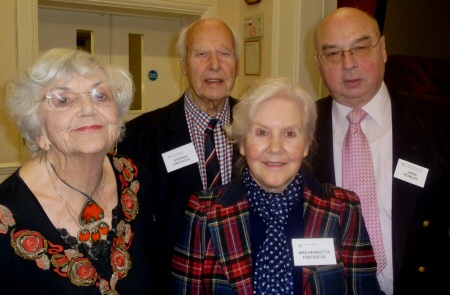 L-R: Edwin Vardey - Stephen Fortescue - Mrs Henrietta Fortescue - John Rowley (Chairman) source: Tony Matthews |
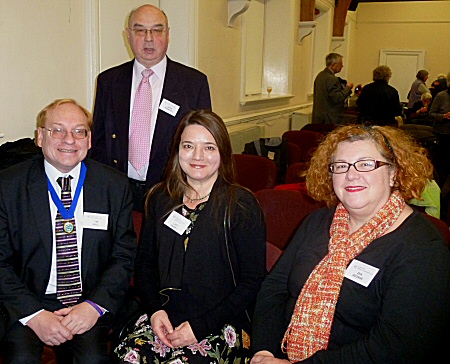 L-R: Cllr Tim Hall - John Rowley (Chairman) - Lucy Quinnell (Chairman Leatherhead & District Countryside Protection Society) - Zen George (Ashtead & Leatherhead Local) source: Tony Matthews |
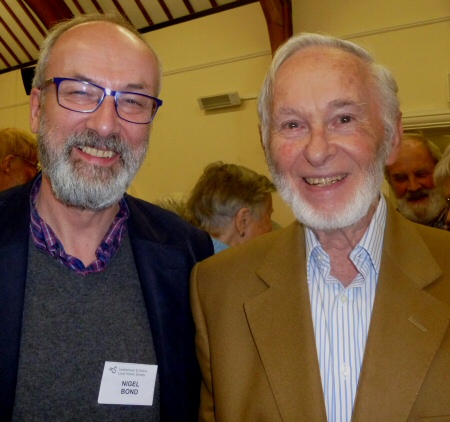 Nigel Bond (Archaeology Secretary) - Bill Whitman (Proceedings Editor) source: Tony Matthews |
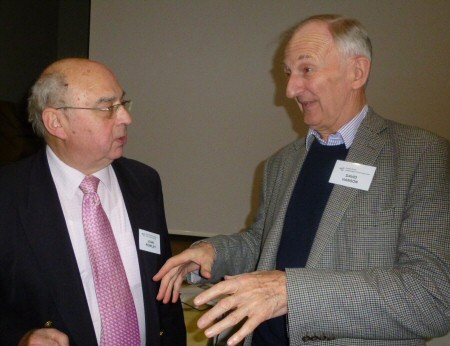 John Rowley (Chairman) - David Hanson (Treasurer, Leatherhead Community Association) source: Tony Matthews |
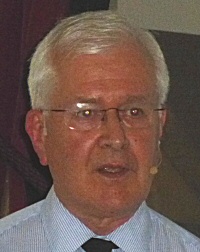 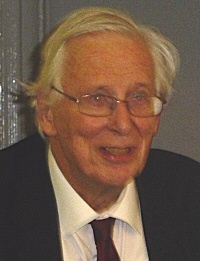 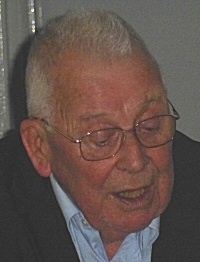 The three speakers: L-R: Frank Haslam (Website Editor & Membership Secretary) - Derek Renn (past President) - Peter Tarplee (past President) source: Tony Matthews |
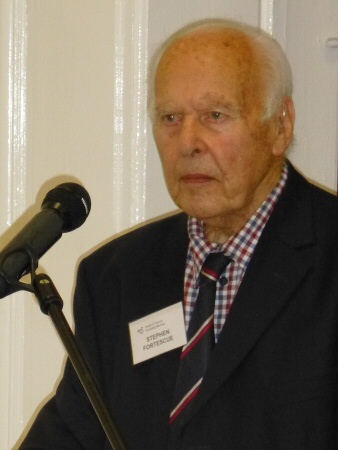 Stephen Fortescue had a few words to say before proposing a Toast. source: Tony Matthews |
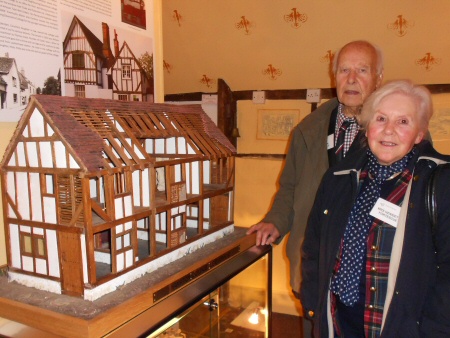 A late night visit to Leatherhead Museum L-R: Stephen Fortescue - Mrs Henrietta Fortescue source: Robin Christian |